Past projects
Below is a list of completed projects
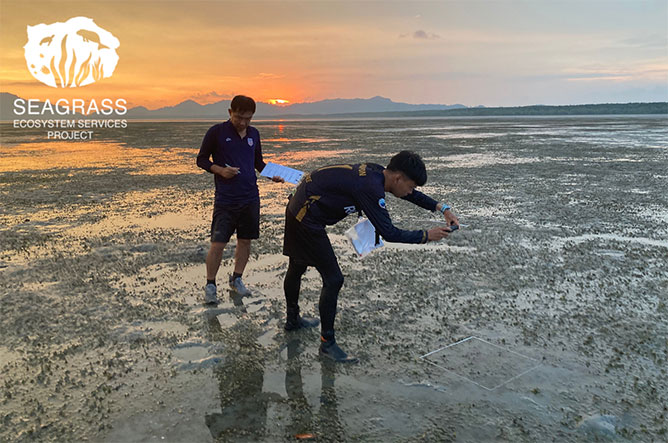
The ‘Conservation of biodiversity, seagrass ecosystems and their services – safeguarding food security and resilience in vulnerable coastal communities in a changing climate’ project (Seagrass Ecosystem Services project) is managed by the Secretariat of the Memorandum of Understanding on the Conservation and Management of Dugongs and their Habitats throughout their Range of the Convention on the Conservation of Migratory Species of Wild Animals (CMS Dugong MOU) and funded by the International Climate Initiative (IKI)
Project start date January 2019
Project end date December 2023
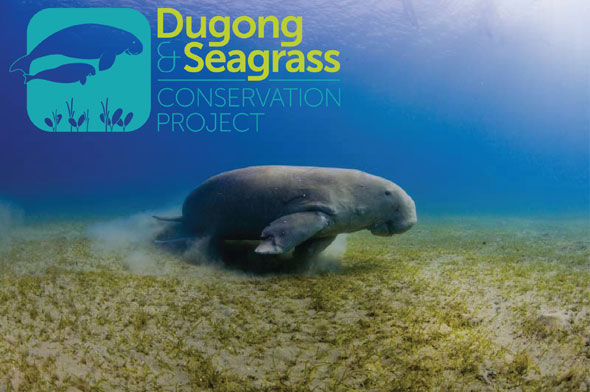
The GEF-5 funded project “Enhancing the Conservation Effectiveness of Seagrass Ecosystems Supporting Globally Significant Populations of Dugongs across the Indian and Pacific Ocean Basins” was the first global movement for the conservation of dugongs and their seagrass habitats in eight countries from Africa to Asia and into the Pacific.
The Project was executed by the Mohamed bin Zayed Species Conservation Fund, with implementation support by the United Nations Environment Programme and technical support from the Memorandum of Understanding on the Conservation and Management of Dugongs and their Habitats throughout their Range of the Convention on Migratory Species.
The Project consisted of 43 national projects across Indonesia, Madagascar, Malaysia, Mozambique, the Solomon Islands, Sri Lanka, Timor-Leste and Vanuatu.
Project start date December 2014
Project end date February 2019
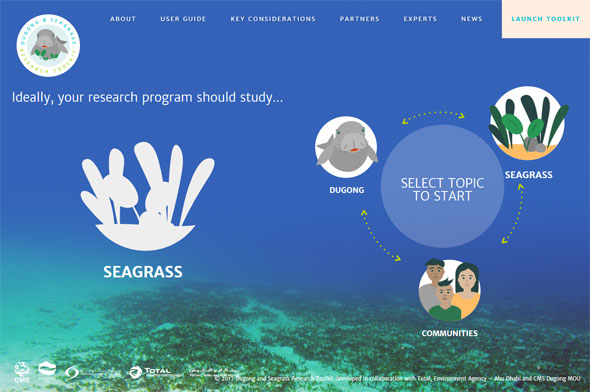
The Dugong and Seagrass Research Toolkit was an initiative by TOTAL, Total Abu Al Bukhoosh, Environment Agency – Abu Dhabi and CMS Dugong MOU to provide an easily accessible online resource that incorporates decision-making for the selection of the most appropriate methodologies for studies of dugongs, seagrasses and the associated human communities.
The Dugong and Seagrass Research Toolkit has been developed to provide an easily accessible online resource that incorporates decision-making for the selection of the most appropriate methodologies for studies of dugongs, seagrasses and the associated human communities.
The Dugong and Seagrass Research Toolkit is targeted for use by researchers, non-government/civil society managers and decision-makers in dugong Range States. A documentary about the Toolkit provides a useful overview of the why the Toolkit is making a significant contribution to dugong and seagrass conservation.
Project start date September 2015
Project end date March 2017
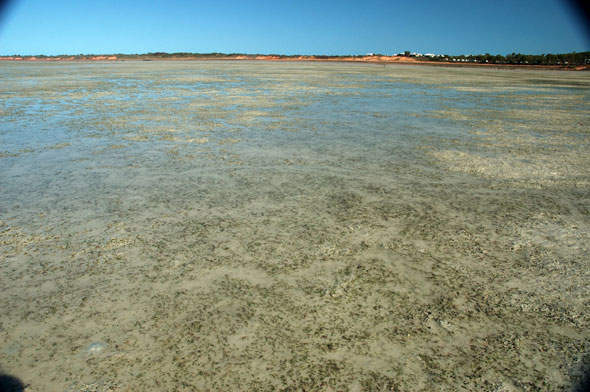
The project was to report on the key project outputs and scientific results of the first 10 years of the Broome Community Seagrass Monitoring Project.
The project reported on seagrass community and environment condition, including temporal and spatial trends, at intertidal sites in northern Roebuck Bay.
A pilot report card was produced to enable integrated reporting on Roebuck Bay seagrass condition The pilot report card used indicators of seagrass condition, based on their significance to seagrass resilience. The report recommended a number of priority actions/activities and research questions to assist with the management of the ecological values of seagrass communities in Roebuck Bay and the Yawuru Nagulagun Marine Park.
The project was coordinated by Environs Kimberley with support from Nyamba Buru Yawuru and the Department of Parks and Wildlife.
Project start date February 2017
Project end date June 2017
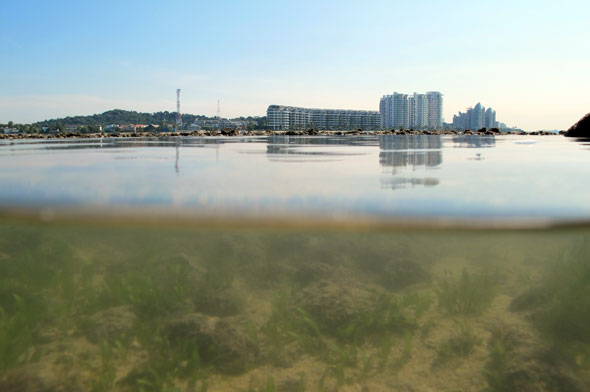
The Singapore Strait International Marine Biodiversity Workshop was held on St John’s Island from 20 May to 7 June 2013 as part of the Comprehensive Marine Biodiversity Survey (CMBS) led by the National Parks Board (NParks) and the National University of Singapore (NUS).
The three-week event was to facilitate interested overseas and local scientists to conduct systematic studies on the marine flora and fauna and take stock of Singapore’s marine life. A total of 54 international and Singapore scientists, staff from NParks and NUS, together with more than 40 volunteers took part in the workshop. Some 35 intertidal and 18 subtidal locations across the Singapore Strait were assessed using a variety of techniques .
The ‘Singapore Deeps’ were also explored using a dredge and beam trawl. Volunteers played a critical supporting role in extracting, collecting and sorting the numerous specimens from the field. The results of the research projects were published in June 2016.
Project start date May 2013
Project end date June 2016
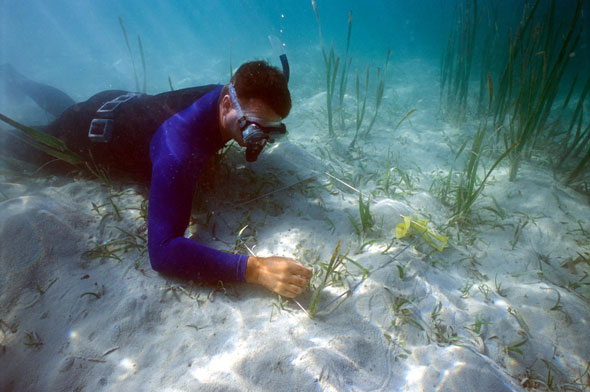
The Solomon Islands Marine Assessment was the first broad-scale survey of marine resources in the Solomon Islands. The survey was conducted over a five-week period from 13 May to 17 June 2004, covering a distance of almost 2000-nm and encompassing seven of the nine provinces.
The survey team comprised an international team of scientists and managers, including some of the world’s experts of coral reefs and associated habitats.
The survey provided an assessment of the biodiversity and status of coral reefs, seagrass meadows, oceanic cetaceans, reef food fish, commercial invertebrates and associated habitats, and recommendations for their conservation and management.
The project was a cooperative project between The Nature Conservancy, Solomon Islands National and Provincial Government Departments and several non-government conservation agencies including Seagrass-Watch.
Project start date May 2004
Project end date June 2006
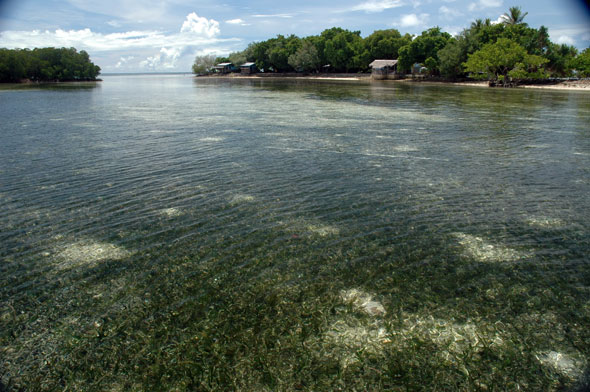
A Rapid Ecological Assessment of Pohnpei lagoon and Ant Atoll was conducted over a two-week period from 26 October to 3 November 2005, examining 508 field validation points and mapping 260 meadows.
The project has revealed that although there is a low diversity of seagrass, it is quite abundant and in relatively good condition. Three species of sea grass were identified: Thalassia hempcichii, Euhalus acoroides and Cymodocea rotundata.
Project results supported recent fish and coral assessments, which identified sedimentation as a major threat to the health of the reef ecosystems.
The survey provided an assessment for improving biodiversity and fisheries conservation for Pohnpei State, Federated States of Micronesia. The survey was sponsored by the Conservation Society of Pohnpei, with support from David & Lucile Packard Foundation and US Department of Interior, Office of Insular Affairs.
Project start date June 2005
Project end date October 2005
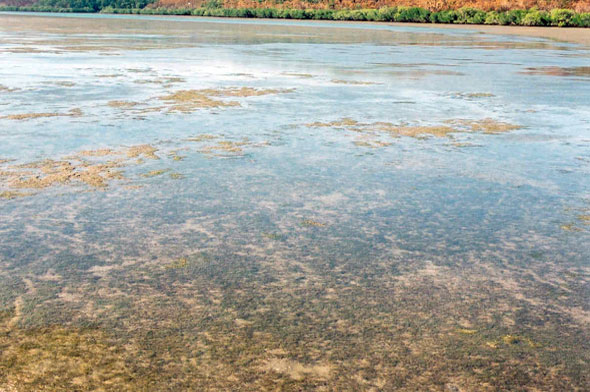
The project investigated seagrass recovery in the Great Sandy Region after the devastating loss of seagrass as a consequence of the Mary River flood in February 1999.
The focus of the study was the Booral Wetlands adjacent to the mouth of the Mary River, where total loss of seagrass meadows (~50 ha) occurred.
An aerial survey of intertidal seagrasses was conducted on the 27th and 28th February 2002 and deepwater seagrass (>10m water depth) in adjacent Hervey Bay was surveyed using drop-cameras on the 1st March 2002.
Intertidal seagrass meadows in the Great Sandy Strait covered 7007 ±1945 hectares, representing over 100% recovery to pre-flood levels.
Long-term Seagrass-Watch monitoring, initiated in the Booral Wetlands in August 1999, reported initial re-colonisation of seagrass occurred in November 2000, 21 months post-flood, and full recovery of meadows to pre-flood cover values occurred August 2002, 30 months post-flood. Recovery was also apparent in the deeper water seagrass communities of Hervey Bay.
The project was funded by the Queensland Parks and Wildlife Service and supported by the Queensland Department of Primary Industries.
Project start date February 2002
Project end date February 2003
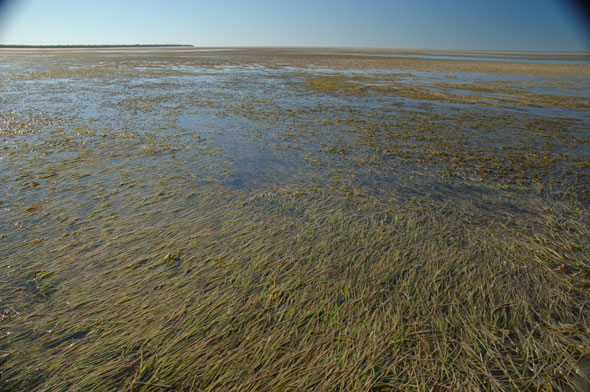
The first comprehensive survey of seagrass resource of the Great Sandy region was conducted between 6 and 14 December 1998.
The survey involved examination of 1,104 field validation points from Elliot Heads and Sandy Cape in the north to Tin Can Bay in the south, and identified 174 individual meadows. Seagrass extended from the intertidal and shallow subtidal waters to a depth of 32m.
Seven species of seagrass were identified within 22 seagrass meadow/community types. Of the estimated 2,307 ±279 km2 of seagrass in Hervey Bay, nearly half were large continuous deep-waters meadows in the southern section of the bay. In the Great Sandy Strait, most of the 5,554 ±1,446 ha of seagrass were intertidal on large mud- and sand-banks, predominantly in the northern and central sections.
The meadows in Hervey Bay and the Great Sandy Strait are one of the largest single areas of seagrass resources on the eastern Australian seaboard, forming part of significant internationally listed Great Sandy Strait Ramsar site and within the Great Sandy Marine Park, providing critical habitat for dugong and turtle populations, shorebirds and productive fisheries.